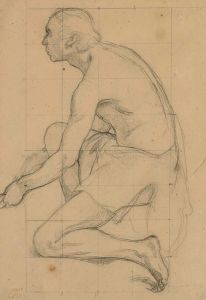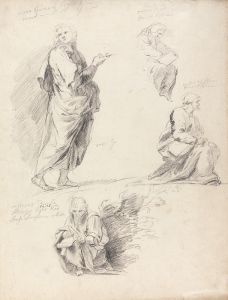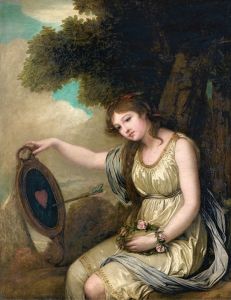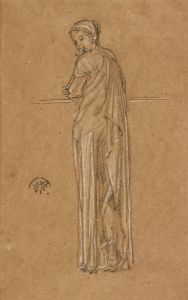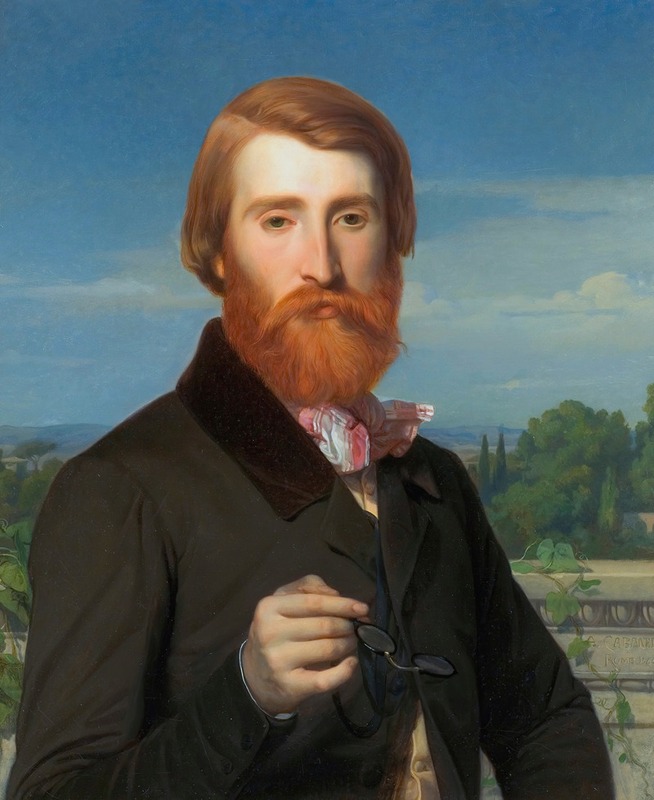
Alfred Bruyas
A hand-painted replica of Alexandre Cabanel’s masterpiece Alfred Bruyas, meticulously crafted by professional artists to capture the true essence of the original. Each piece is created with museum-quality canvas and rare mineral pigments, carefully painted by experienced artists with delicate brushstrokes and rich, layered colors to perfectly recreate the texture of the original artwork. Unlike machine-printed reproductions, this hand-painted version brings the painting to life, infused with the artist’s emotions and skill in every stroke. Whether for personal collection or home decoration, it instantly elevates the artistic atmosphere of any space.
Alfred Bruyas by Alexandre Cabanel is a notable 19th-century portrait painting that captures the likeness of the French art collector and patron Alfred Bruyas. Alexandre Cabanel, a prominent French painter known for his academic style and historical subjects, painted this portrait in 1846. The work is a testament to the close relationship between the artist and his subject, as well as the cultural milieu of the time.
Alfred Bruyas was born in 1821 in Montpellier, France, and became one of the most influential art collectors of his era. He was known for his support of contemporary artists and his dedication to promoting modern art. Bruyas's collection included works by some of the most renowned artists of the 19th century, such as Gustave Courbet, Eugène Delacroix, and Jean-Baptiste-Camille Corot. His patronage was instrumental in the careers of many artists, providing them with the financial support and encouragement needed to pursue their creative endeavors.
The portrait of Alfred Bruyas by Cabanel reflects the artist's skill in capturing the essence of his subject. Cabanel was a master of the academic style, which emphasized precise drawing, smooth brushwork, and a polished finish. In this portrait, he employs these techniques to convey Bruyas's personality and status. The painting depicts Bruyas in a thoughtful pose, with a serene expression that suggests introspection and intelligence. The attention to detail in the rendering of his features and clothing highlights Cabanel's technical proficiency and his ability to convey character through portraiture.
Cabanel's choice to paint Bruyas is significant, as it underscores the mutual respect and admiration between the artist and the collector. Bruyas was not only a patron but also a friend to many artists, and his support was crucial in fostering the development of new artistic movements. The portrait serves as a visual representation of the symbiotic relationship between artists and patrons during the 19th century, a time when the art world was undergoing significant changes.
The painting is part of the collection at the Musée Fabre in Montpellier, which houses many works from Bruyas's collection. The museum is a testament to Bruyas's legacy and his impact on the art world. His collection, which he bequeathed to the city of Montpellier, continues to be a source of inspiration and study for art historians and enthusiasts alike.
In summary, Alfred Bruyas by Alexandre Cabanel is more than just a portrait; it is a reflection of the cultural and artistic dynamics of 19th-century France. The painting captures the essence of a man who played a pivotal role in the art world of his time, and it stands as a testament to the enduring relationship between artists and their patrons. Through Cabanel's skilled hand, the portrait immortalizes Bruyas's contribution to the arts and his lasting influence on the cultural landscape.






